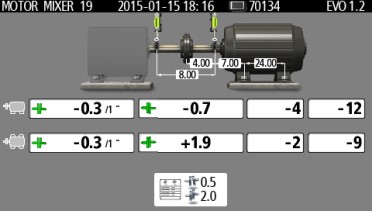Repeatability vs. Desired Outcome in Shaft Alignment

You may perform an alignment measurement, and take great pains to do exactly what the laser says to do, only to find the results aren’t zero. Why?
Here are some reasons why:
- Uncorrected soft foot.
- Not repeating the same tightening sequence each time.
- Shim thicknesses not marked correctly, or not exactly the thickness as marked.
- Dirt or trash under machine feet.
- A bolt-bound condition.
- Not holding position of the laser transmitter/detectors, either from them “drifting” or moving, being bumped, etc. As a side note, the transmitter/detectors may stay in place while the shafts are misaligned, but as alignment is improved, the forces keeping the shafts from rotating may free up, allowing the “heads” to drift, due to their weight, and gravity.
- Using a hammer or 4×4 to hit the machine being moved. Not only is this a very un-precise way to position machinery, it could cause the transmitter/detectors to be jarred out of place.
- Binding up jacking bolts. Never try to “hold” the machine in place with jacking bots. They are only for moving the machine around, and should be backed off once the machine is set.
- Vibration from nearby machines.
- Excess bearing clearances in one of the machines.
- Incorrect distance measurements on the alignment tool set up.
Again, do not confuse a “desired outcome” with a “successful outcome”. Just because the results aren’t zeros all around does not mean the alignment isn’t good enough. If the proper alignment tolerance is achieved, the alignment should be considered completed.
Too many people waste too much time trying to achieve zero misalignment. There is little to no difference in the life of a machine whether it is 2 mils or .2 mils misaligned, except in cases of rigid couplings, or very high speed machinery.
*This article was originally created by Stan Riddle.

